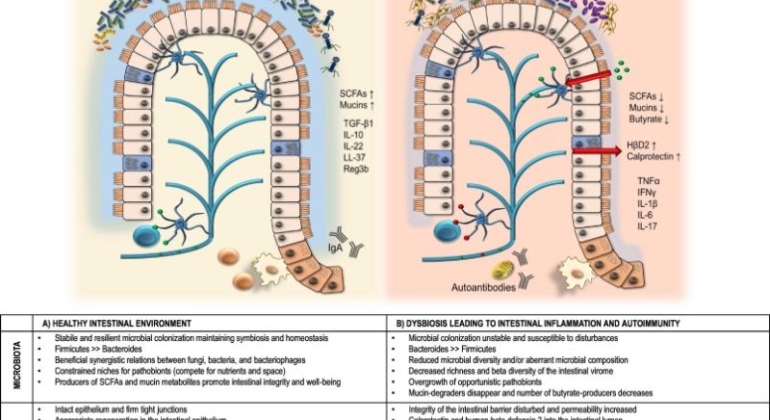Understanding the Role of Tight Junctions
Introduction:
Intestinal permeability, or the passage of substances across the intestinal barrier, plays a critical role in various diseases. Conditions such as inflammatory bowel disease (IBD), coeliac disease, and graft-versus-host disease (GVHD) have been extensively studied in relation to increased intestinal permeability. While the mechanisms underlying barrier loss in these diseases differ, it is important to explore the impact of tight junctions, the primary determinant of passive paracellular transport, on intestinal barrier function.
Tight Junctions and Intestinal Barrier Function:
In the absence of epithelial damage, tight junctions regulate the paracellular transport of molecules. These specialized structures eliminate intercellular spaces between adjacent cells, tightly fusing the outer leaflets of the plasma membrane lipid bilayer. Adherens junctions and desmosomes, which are connected to the cytoskeletal structures, provide the necessary strength to support tight junctions and maintain cell shape.
The Pore Pathway in Disease:
Studies have shown that claudin-2, an integral protein of tight junctions, is upregulated in various inflammatory disorders, including ulcerative colitis, Crohn’s disease, coeliac disease, and irritable bowel syndrome. Factors such as interleukins (IL-1, IL-6, IL-13, IL-22), tumor necrosis factor (TNF), and infections mediate the upregulation of claudin-2. Increased claudin-2 expression leads to augmented paracellular cation permeability, affecting the integrity of the intestinal barrier.
The Leak Pathway in Disease:
While the leak pathway is involved in physiological processes such as nutrient absorption, excessive permeability is induced by inflammatory cytokines like TNF. The regulation of tight junctions during physiological and pathophysiological conditions differs, suggesting distinct underlying mechanisms. Factors such as myosin light-chain kinase (MLCK) activation and occludin endocytosis play a role in barrier loss induced by inflammatory mediators.
Conclusion:
Understanding the complex interplay between tight junctions, claudin-2 expression, and disease pathology is crucial for unraveling the mechanisms underlying increased intestinal permeability. The involvement of tight junctions in various diseases, including IBD, coeliac disease, GVHD, and even poorly understood conditions like irritable bowel syndrome and autism spectrum disorders, warrants further investigation.
Targeting tight junction proteins and their regulators may offer potential therapeutic strategies to modulate intestinal barrier function and improve disease outcomes.




